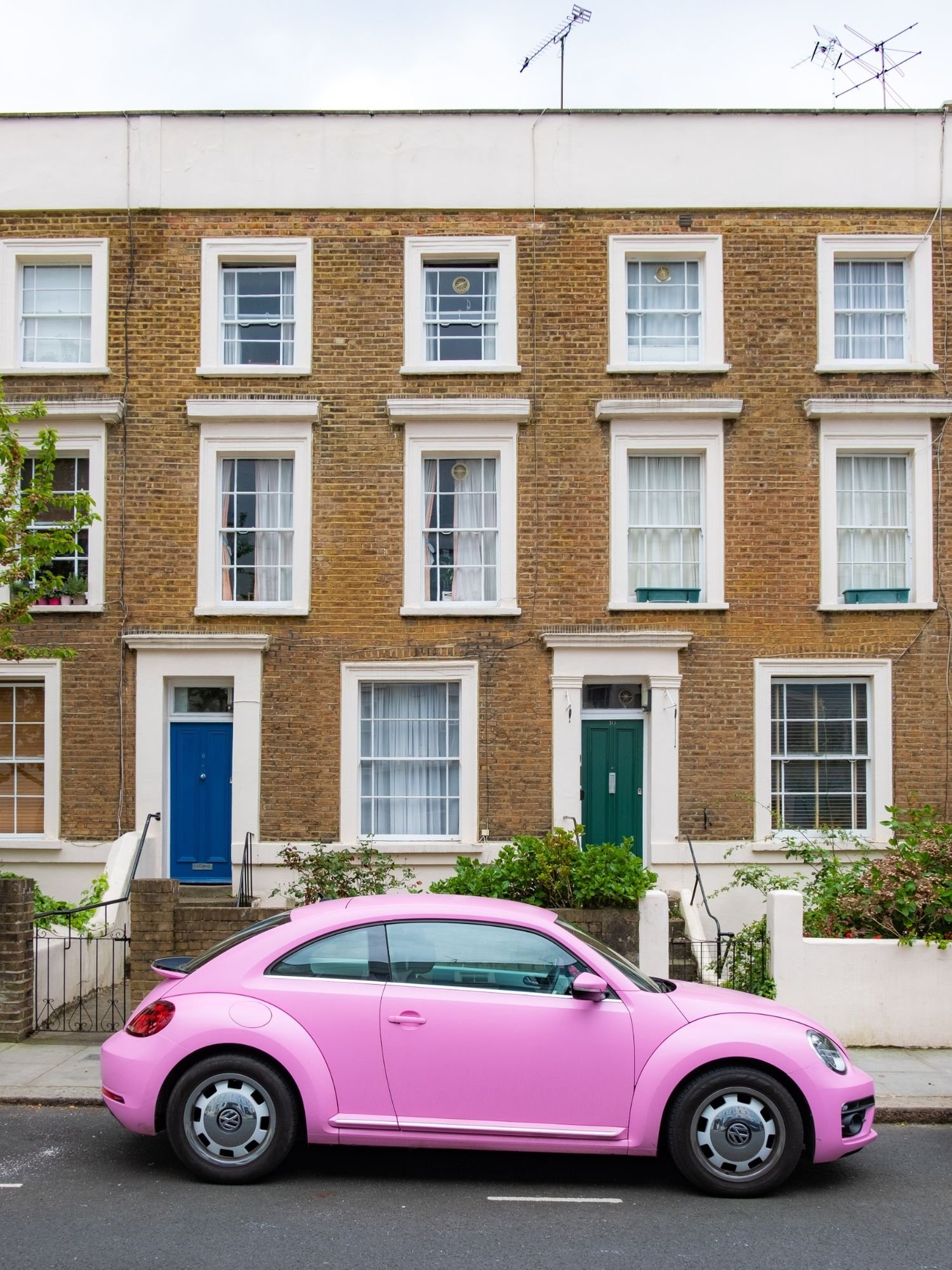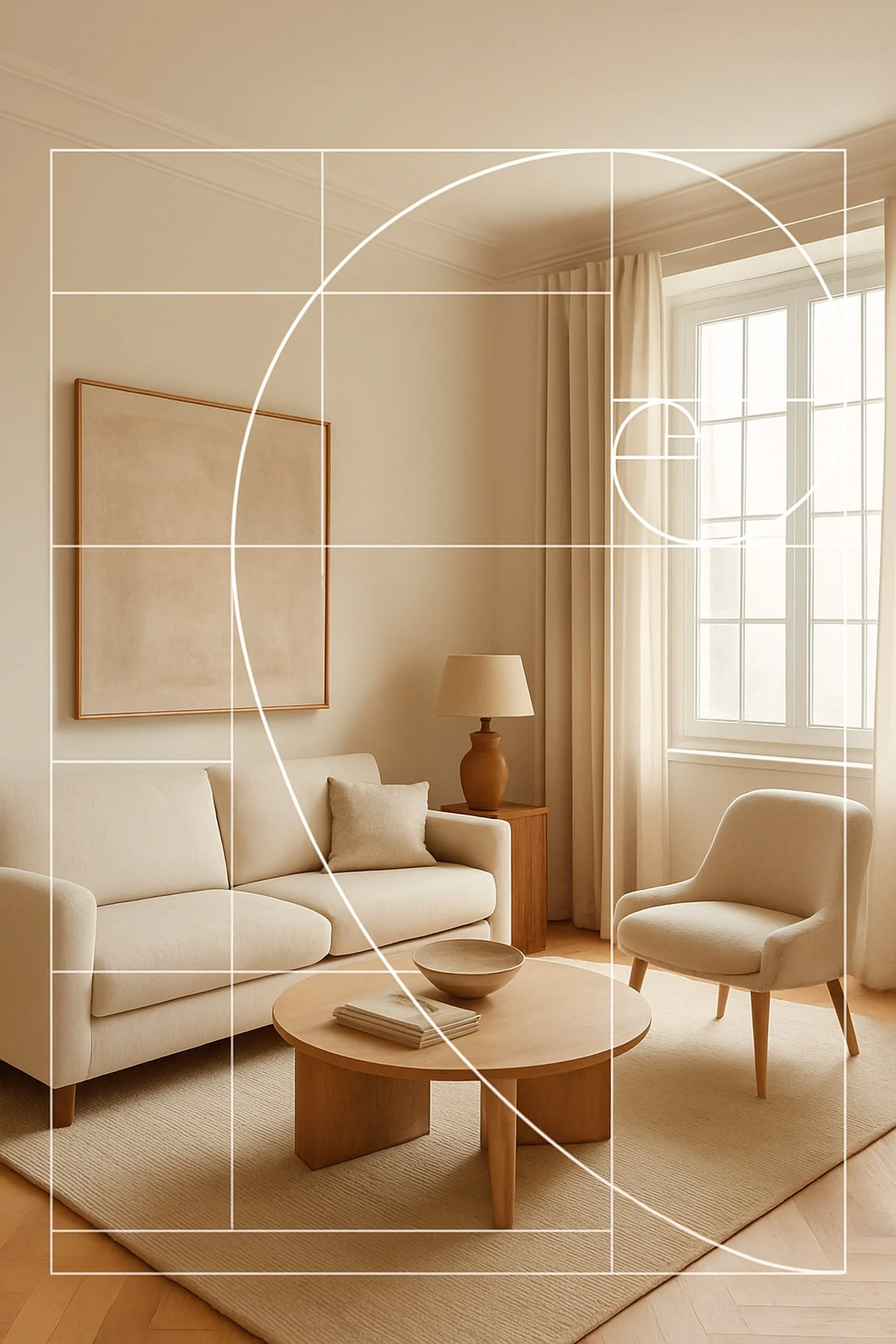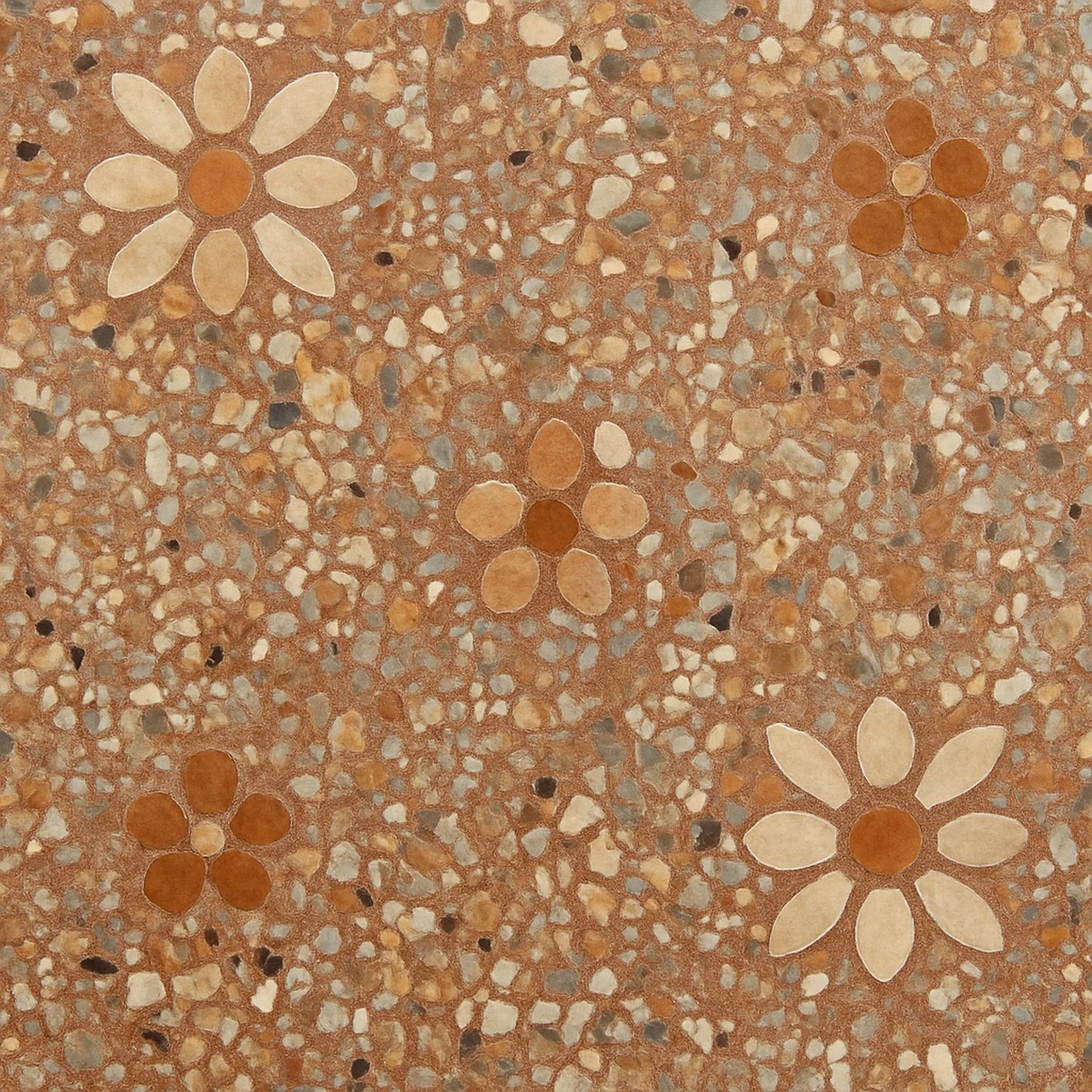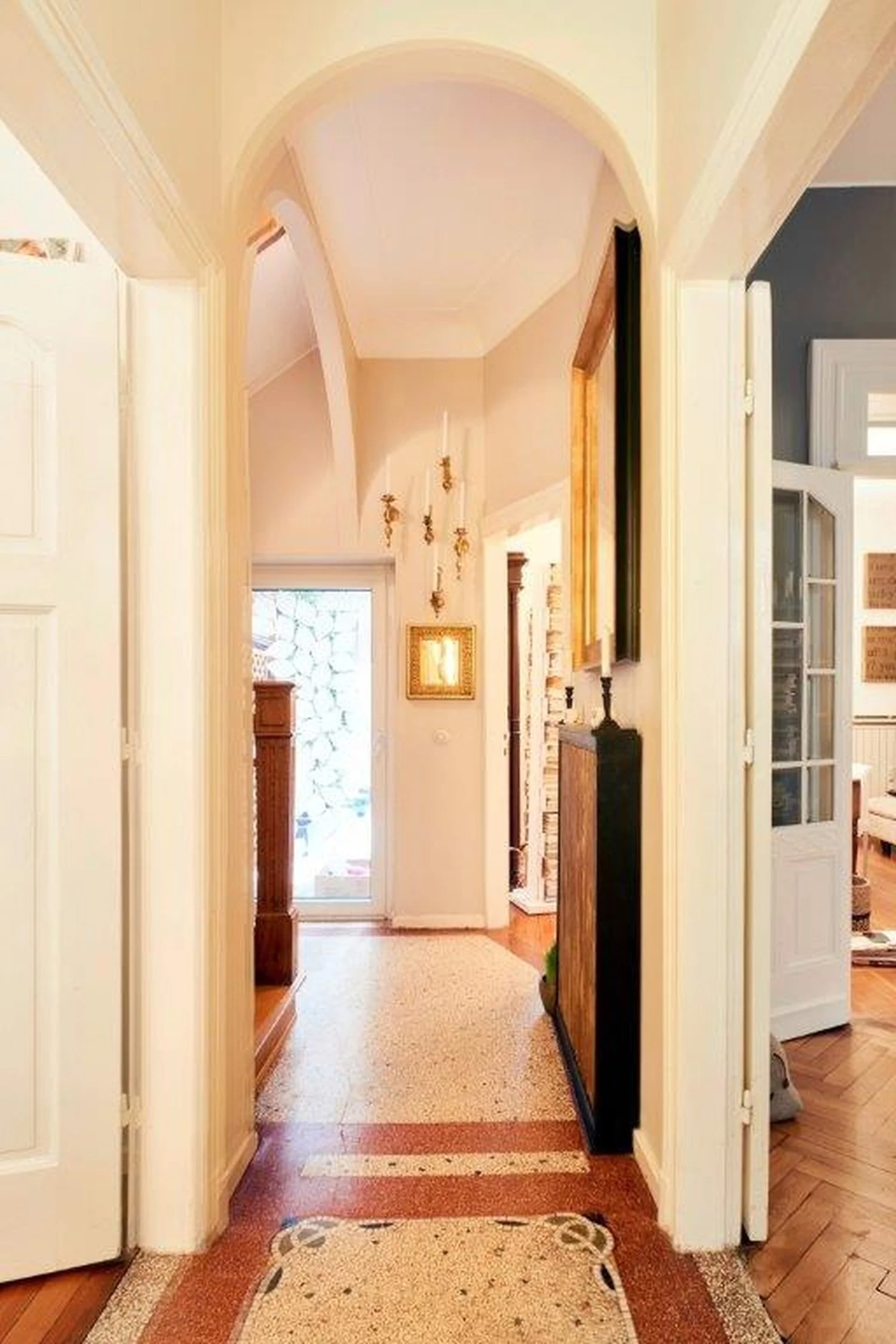Somewhere between chaos and control, between wild creativity and ruthless geometry, lies a number.
Roughly 1.618.
The Golden Ratio.
Φ. Phi. Divine proportion. Call it what you like, it’s the math behind why certain things just feel right.
The ancient Greeks knew it. Renaissance artists swore by it. Le Corbusier tried to standardize it. And even today, it keeps showing up in places where beauty happens quietly.
It’s there in sunflowers and seashells. In the Parthenon and the pyramids. In the spirals of galaxies and the curve of a nautilus shell. A strange, mathematical thread tying together nature, art, and design - a cosmic flex, if you will.
But let’s be honest: is the Golden Ratio always intentional?
Probably not.
Leonardo da Vinci may have known what he was doing. The sunflower almost certainly did not.
Yet there’s something undeniably satisfying about the way the Golden Ratio seems to stitch the world together. Not too symmetrical. Not too chaotic. Just balanced enough to keep things interesting.
I experienced this mathematical magic myself when redesigning my study last year. After weeks of frustration with a layout that never felt quite right, I applied the Golden Ratio to determine the ideal desk placement in relation to the window wall. The result was immediate: a sense of balance that had eluded me through dozens of other arrangements. What changed wasn't the furniture itself, but the mathematical relationship between the elements. That's the quiet power of proportion.
So How Do You Use It?
If you're working on a space, whether it’s choosing art for a wall, planning a bookshelf, or designing a facade, here’s the simplest Golden Ratio hack:
Divide the total length by 1.618.
The result? Your smaller, “golden” section. The leftover? The larger, “golden” complement.
Example:
• Have a 2-meter wide wall? 2 ÷ 1.618 ≈ 1.24 meters.
• That means your focal artwork could be around 1.24 meters wide, with the remaining space acting as natural breathing room.
It works for layouts, spacing, furniture placement, even table settings. Aywhere proportion matters more than you might think.
And here’s another easy trick:
The Golden Rectangle.
Draw a rectangle where the long side is 1.618 times the short side. Cut a square from it, and what’s left? Another Golden Rectangle. This self-repeating elegance is why the Golden Ratio shows up in classical architecture, Renaissance paintings, and occasionally, very good websites.
The ratio works elegantly for three-dimensional spaces too. When arranging furniture in a living room, try this: if your sofa is 2 meters long, place your coffee table approximately 1.24 meters away from the centre of your seating area (2 ÷ 1.618). This creates a conversation zone that feels neither cramped nor disconnected, just right for both intimacy and comfort. The same principle works for dining tables, reading nooks, and garden pathways.
Think of the Golden Ratio as nature's rhythm section: It creates a visual beat that feels neither rushed nor dragging, but perfectly timed. Like the satisfying pause between musical phrases or that perfect moment when a chef knows the dish needs nothing more added, the Golden Ratio is the point where adding or subtracting would only make things worse.
Golden Myths
It's worth noting that not every spiral in art history was consciously designed using the Golden Ratio. Many modern claims about its presence in famous works (like the Mona Lisa or the Great Pyramids) involve rather creative measurements and generous interpretations. Artists throughout history have used many compositional tools and the Golden Ratio being just one.
What matters isn't whether Leonardo was calculating 1.618 on his canvas, but that the proportional relationships that please the human eye often approximate this ratio, whether by mathematical intention or intuitive feeling. The most beautiful designs often arrive at similar proportional conclusions, regardless of their starting point.
So, Design, But Make It Divine
In architecture and interiors, the Golden Ratio is just one way to create proportions that feel… calm. Human. It guides where we place windows, how we shape doorways, even how we arrange furniture. It whispers: step back, this is the right amount of space between things.
It’s not about perfection. It’s about harmony.
A well-proportioned room doesn’t shout. It doesn’t need to. It makes you feel at ease without knowing why.
Proportions: The Quiet Power Move
When proportions are right, you don’t notice them. You just feel the calm. The balance.
When they’re wrong, you can’t put your finger on it, but you sigh. Or frown. Or leave.
Spotting the Absence (a Modern Epidemic)
And speaking of proportions not playing nice…
Look around most new builds. Spot any graceful ratios? Probably not.
Because here’s the thing: the Golden Ratio demands space, patience, and attention. Three things that don’t fit well into the spreadsheet logic of many modern projects and developers driven primarily by profit margins, or planning and urbanism offices focused more on density than dignity and quality of life.
In the rush to maximize square meters and minimize costs, proportions get squeezed. Windows too small. Facades too flat. Floor plans that feel like someone Tetris-ed them five minutes before the deadline.
The result? Spaces that technically function but never feel good.
Good design works invisibly on the nervous system.
The Golden Ratio isn’t the only way to get there. But it’s one of the oldest, and still one of the best.
This mathematical relationship between design and natural patterns points to something deeper: our homes and spaces feel most harmonious when they echo the proportional wisdom of the natural world.
Just as biomimicry (which I explore in another piece) looks to nature's solutions for functional design problems, the Golden Ratio offers nature's solution to aesthetic balance.
Both approaches recognize that millions of years of evolution might have something to teach our relatively young design studies.
Next time you find yourself drawn to a particular space without knowing exactly why, a room that feels perfectly balanced, a building that seems to "just work," or even a simple shelf arrangement that pleases the eye, look for the hidden mathematics. The Golden Ratio might be quietly working its proportional magic, speaking a numerical language that your intuition understands perfectly, even if your conscious mind never does the math.
What spaces in your world feel most harmonious to you? The answer might be as close as 1.618.
Because even the best design ideas often start with a simple question: What if we listened to the mathematics of beauty?
If this kind of thing fascinates you as much as it fascinates me, you might also enjoy:





















